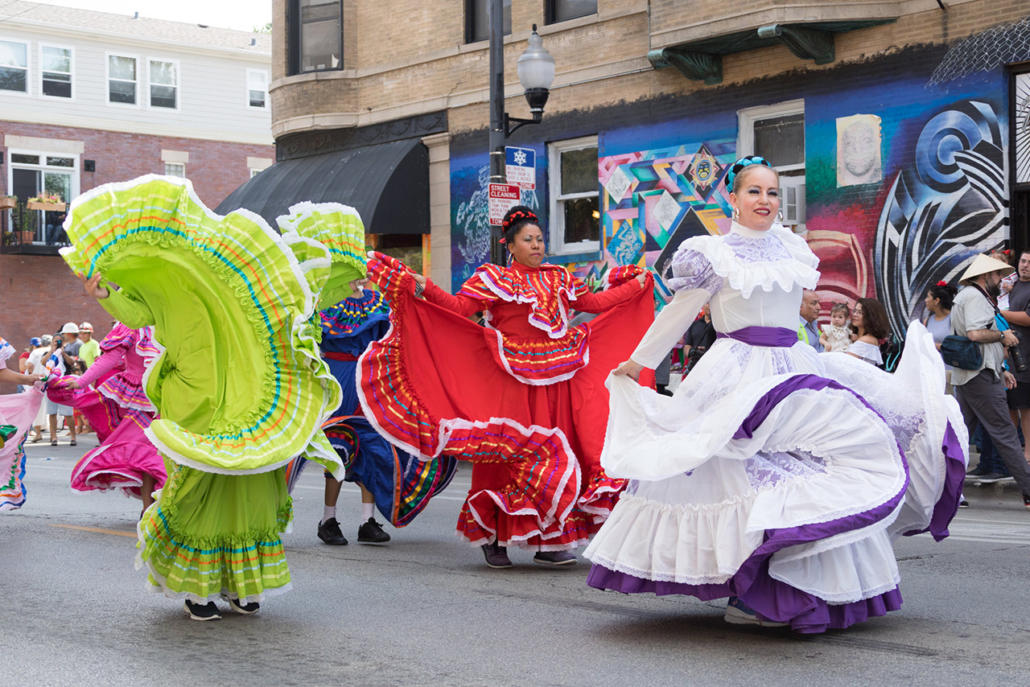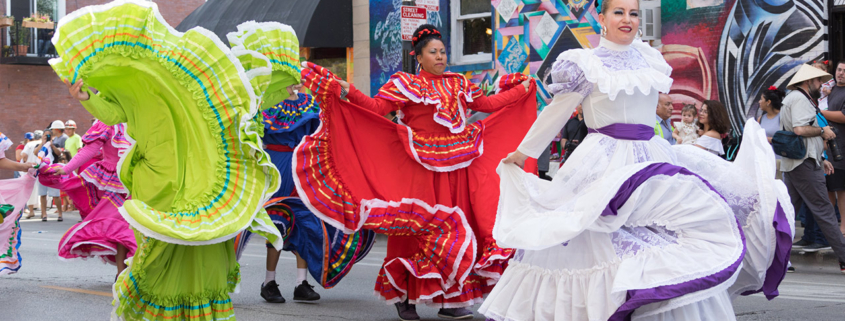Neighborhood News: Pilsen-from Bohemian to Latino to Forbes ‘coolest neighborhood’

“Pilsen might be the only place in the country where decades-old taquerias—Mexican restaurants specializing in tacos—line streets with Czech names, and vibrant public murals turn alleyways into exhibitions. South and west of Chicago proper, the neighborhood of Pilsen is geographically small but densely packed with vintage stores, Mexican restaurants, art galleries, record stores, young visitors, and families who have been in the area for generations.”
The Atlantic: Pilsen-An Explosion of Color in a Gray City
Today, the neighborhood Is bound, roughly, by South Damen Avenue and South Halsted Avenue to the west and east, and by 16th Street and West Cermak Road to the north and south.
In the beginning…
With buildings that survived the Great Chicago Fire of 1871, the Lower West Side’s Pilsen neighborhood was founded in 1878 by Czech immigrants, who named the district after Pilsen, the fourth largest city in Czechia.
The population also included other ethnic groups from the Austro-Hungarian Empire including Slovaks, Slovenes, Croats and Austrians, as well as immigrants of Polish and Lithuanian heritage. Most were refugees from the toppled Austrian-Hungarian Empire. As a WTTW history said, many immigrants were Bohemian Freethinkers who created an extensive network of schools, athletic clubs (or sokols), benevolent societies, organized discussion groups, and forums for political debate. Freethinkers formed their own credit unions and savings and loan associations, providing the means for much of Pilsen’s earliest and grandest development projects. To this day, neo-Bohemian baroque architecture, marked by heavily-corniced, mixed-use structures, defines the neighborhood’s unique aesthetic.
There had been previous Bohemian settlements in Chicago, according to a study by the Czech & Slovak Genealogy Society of Illinois, but none had been able to reach the levels of self-sufficiency and cultural autonomy that Pilsen had. Pilsen would become the major Bohemian settlement, not only in Chicago, but in the entire United States, a position it maintained until the granting of Czech independence after World War I. After that, immigration rapidly declined and second generation Bohemians moved to the suburbs.
By 1960, according to WTTW, approximately 14 percent of Pilsen’s population was Mexican or of Mexican descent. Within a decade, they comprised the majority of Pilsen residents.
Today: Vibrancy on every corner
As one TripAdvisor notes, Pilsen emerged as a largely Latino community in the 1960s and 1970s.
The first thing you’ll notice is the colorful street art, according to Choose Chicago. The buildings are covered in massive paintings and mosaics that pay homage to the neighborhood’s Hispanic roots. “Take a stroll around the neighborhood to soak it all in, particularly the 16th Street Murals,” they urge.
As our TripAdvisor notes, Mario Castillo painted Peace or Metafisico in 1968, the first Mexican and anti-Vietnam War mural in Pilsen. Benito Juarez Community Academy, which opened in 1977, has a 94 percent Latino student body and once was the largest high school in Illinois with more than 5,000 students.
“Walk through the Pilsen neighborhood, see the street carts doling out tamales and paletas,” they said. “Marvel at the 16th Street murals, visit the National Museum of Mexican Art, Thalia Halland St. Procopius Church, take a break at Dusek’s Board & Beer or Simone’s or Kristoffer’s Café & Bakery or Panaderia Nuevo Leon or Punch House or La Vaca Margarita Bar or Pollo Express.
The neighborhood’s thriving arts scene has become known as the Chicago Arts District. This seven-block stretch is filled with artists lofts, studios, retail spaces, galleries, and more. Another must for art lovers is Pilsen Arts and Community House, a local gallery focused on community and accessibility.
Forbes’ Coolest Neighborhood, 2018
Forbes magazine named Chicago’s Pilsen neighborhood one of the world’s 12 hippest destinations. Six years later, Pilsen is still cool.
According to a report by CBS News at the time, Forbes magazine said Pilsen earned this honor by becoming “a nest of cutting-edge culture and art with its mix of restaurants, Mexican street scenes, and galleries.”
Event: Forget Valentine’s Day. Come to Yollo’s Anti-Vday hangout!
On Saturday, February 9, The National Museum of Mexican Art’s youth initiative, Yollocalli Arts Reach, presents the Anti-Valentine’s Day Party. Join the Museum for an evening of music, food, dancing, art and sexual health info and freebies. You can snap a pic with your bestie in the Polaroid photo booth, make yourself a bouquet or a bracelet, or get in the spirit and create your own valentine cards. The galleries will be open late for exploring. This event is free and for young people ages 25 and under. For more information and registration, click here.
Alison Moran-Powers and Dean’s Team Chicago



